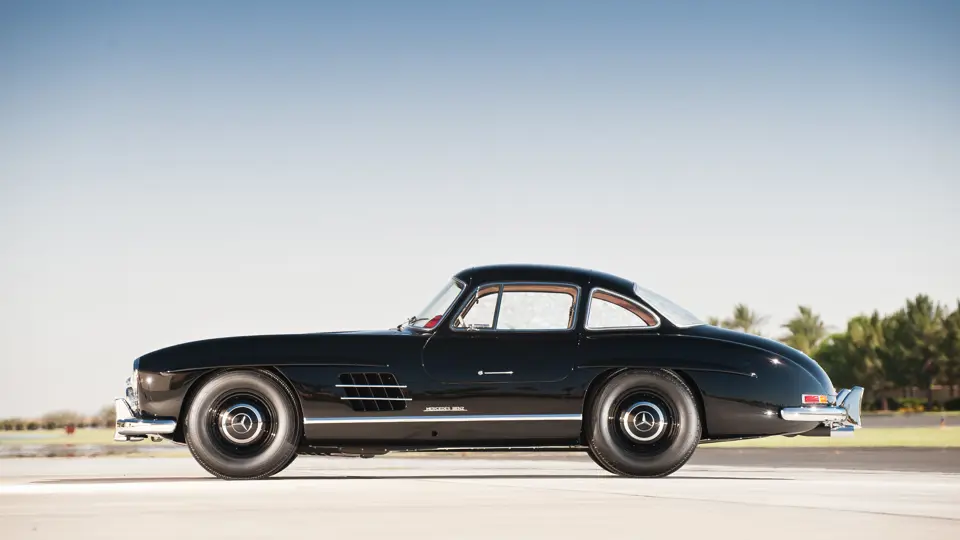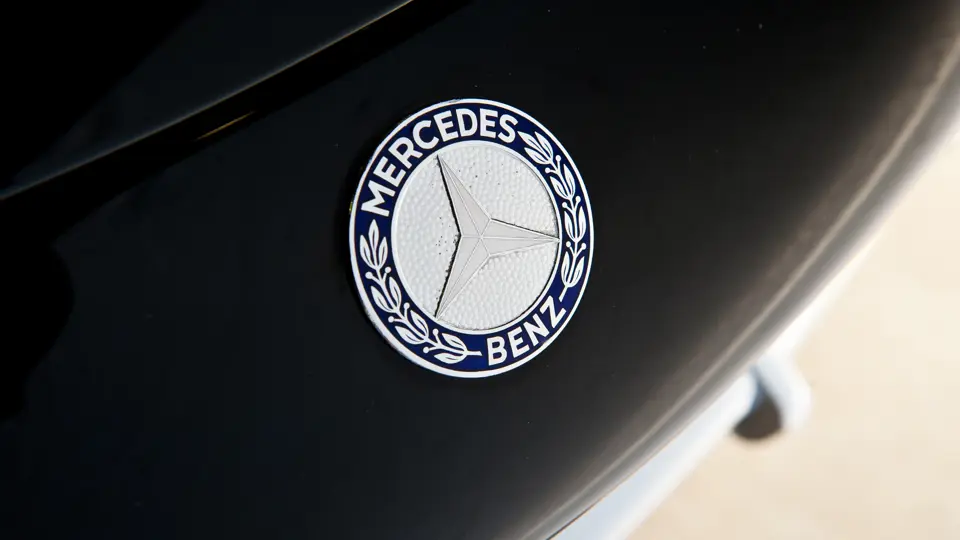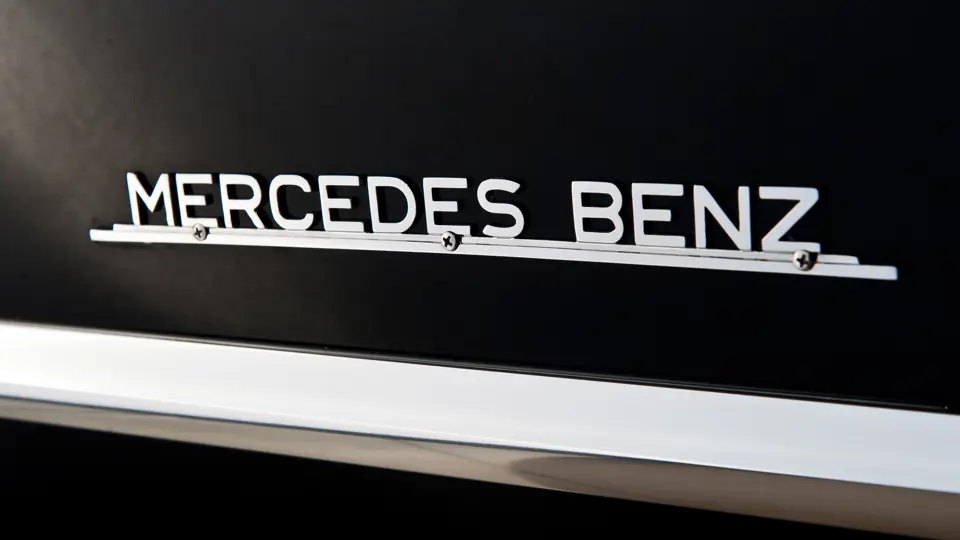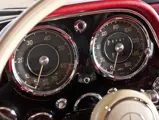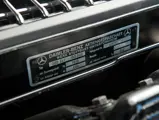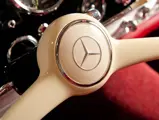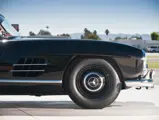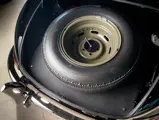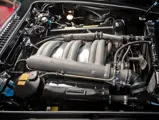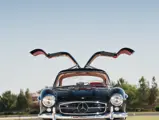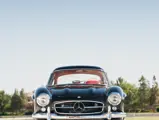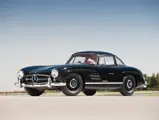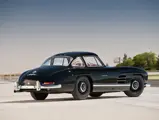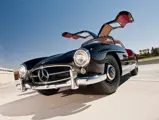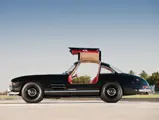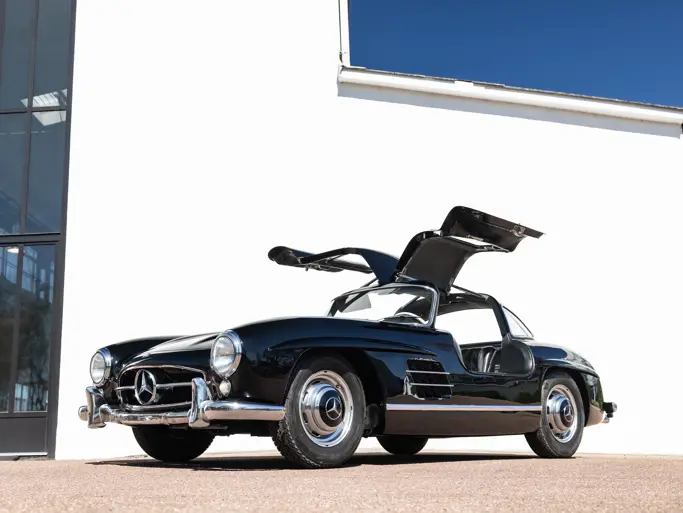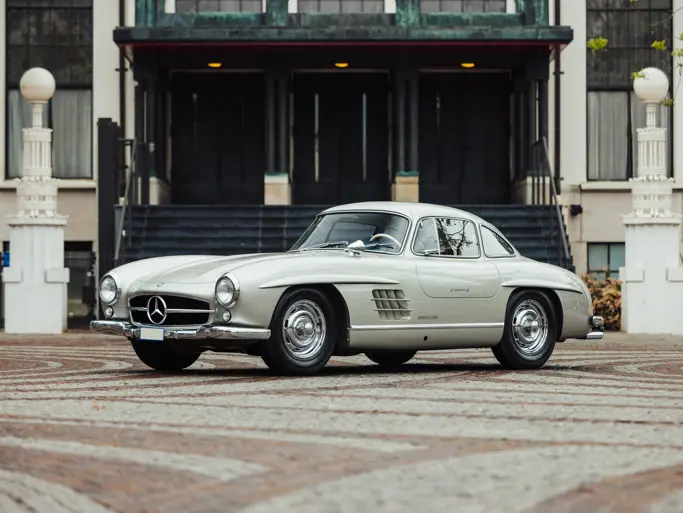215 hp, 2992 cc, SOHC six-cylinder, Bosch mechanical fuel injection, four-speed manual transmission, independent front suspension by unequal length A-arms, coil springs and sway bar, single low-pivot swing axles with trailing arms and coil springs reinforced by torsion bars, front and hydraulic drum brakes. Wheelbase: 94.5"
- Iconic Gullwing Coupe sold new in Toronto; one owner until 2006
- Ground-up restoration by RM Auto Restoration
- Black with red leather interior
One doesn’t usually think of Mercedes-Benz in terms of “Win on Sunday, sell on Monday,” but in the case of the 1954-57 300SL Gullwing coupes, that’s exactly what happened.
The race was Mexico’s 1952 La Carrera Panamericana, a vicious, 2,000-mile road race, which eliminated 53 of the 92 starters and was known for killing drivers and spectators alike. Within a week after Mercedes had gone 1-2 – and would have made it 1-2-3, except for John Fitch’s disqualification – the company had 400 orders for the 155 mph 300SL Gullwing coupes, even at an estimated $13,500 each. The cars were so fast in the La Carrera that team manager Alfred Neubauer was unable to keep up with them in a Douglas DC3 spotter plane.
La Carrera was the fifth race the 300SLs had entered. The gullwing coupes had placed 2nd in the Mille Miglia, 1-2-3 in the Berne, Switzerland Sports Car Race, 1-2 at Le Mans, 1-2-3-4 at the Nürburgring and 1-2 in Mexico. La Carrera was actually an afterthought; Mercedes-Benz had planned to cease 300SL production before the November race, since the car had accomplished what the Factory had set out to do. But the company’s importer in Mexico City and U.S. distributor Max Hoffman in New York pleaded for an entry.
Rumor has it that production of the 300SL and the 190SL was prompted by Hoffman placing a firm order for 1,000 cars. That’s disputed by Mercedes-Benz officials who remember the circumstances and say that Hoffman was too wily to commit that much money, but the fact remains the company was sufficiently energized to introduce the 300SL at the New York Auto Show on February 6, 1954.
It was the first time a Mercedes would be introduced abroad instead of in poverty-stricken Germany, making it clear that the U.S. was the target market. And in fact 125 of the first 166 300SLs built in 1954 were sold through Hoffman’s New York and Los Angeles dealerships. In a world where the VW Beetle could do 70 mph and a Porsche might touch 100 mph, the 300SL could hit 161 mph with the right gearing – an impressive figure today.
When a 1954 Cadillac Eldorado cost $5,738, the new 300SL retailed for $6,940, almost 20 per cent higher, and the rich and famous flocked to the showrooms (or more likely had the cars delivered). First-year owners included the Duke of Edinburgh, King Hussein of Jordan, King Baudoin of Belgium, the Ali Khan, Argentine dictator Juan Peron, King Constantin of Greece and movie stars like Sophia Loren and Zsa Zsa Gabor – though the high door sills might have limited their choice of dresses.
Industrial magnates in Europe and America bought the majority of the 1,400 Gullwings built between 1954-57, and many of them took their cars racing and rallying, proving the 300SL the best all-round sports car of its generation. Indeed, the 300SL’s competition career was only seriously curtailed when the value of the cars began to climb past the point where owners wanted to risk them.
Mercedes-Benz withdrew from racing after the 1955 Le Mans disaster, but privateers flocked to the tracks with their 300SLs, and the Factory was happy to help them. John Fitch and Olivier Gendebien won their class in the 1955 Mille Miglia, then Gendebien won the Liege-Rome-Liege and Alpine rallies. W.I. Tak won the Tulip Rally, Werner Engle won the European Touring Car Championship, Armando Zampiero won the Italian Sports Car Driver’s Championship, and Paul O’Shea won the SCCA’s D Production Class in the U.S. In 1956, Prince Metternich finished sixth in the Mille Miglia, Shock and Moll won the Acropolis, Sestriere rallies and the European Rally Championship, Stirling Moss was 2nd in the Tour de France, and Willy Mairesse won the Liege-Rome-Liege race.
The 300SL remains a mechanical marvel, still fascinating to engineering students 57 years later. First of all the space frame is ingenious, and the high, wide door sills contribute the torsional stiffness sacrificed to the gullwing doors. The Bosch mechanical fuel injection works smoothly enough for daily use, and the engine is canted over about 30 degrees to enable the hood line to be brought down.
The cabin is light and airy, and fitted luggage was available to make the most of the rear space. That luggage was one of few options; another was Rudge knock-off wheels. The only real complaint involved summer weather and the streamlined belly pans, which assisted the car to its top speed but also contained the engine heat. It was common in the day to see 300SLs gliding down the Promenade des Anglais in Nice with the gullwing doors “up” for improved airflow, but perhaps it was also a matter of style.
In 1957, a 300SL roadster was introduced to complement and eventually replace the Gullwing coupe. It was built until 1963 and, while more convenient and including offering a factory hardtop, it never had the same cachet.
The Mercedes-Benz offered here is a superb example that was fully restored in 2007 by RM Auto Restoration. Remarkably the Gullwing had been in its original single ownership from 1957 to 2006 until it was purchased by its current enthusiast owner. At the time, the car had been an original Mercedes-Benz red with a green plaid interior and showed just under 56,000 miles from new.
Originally sold in Toronto, Ontario to the Corley family, it comes with complete documents, including full restoration details. A senior member of the RM Auto Restoration management team recalls it was a remarkably sound and original car that had been carefully maintained.
“It was red and at the time we did a color change, a body-off restoration and the chassis was fully restored. The engine was completely gone through and the suspension was overhauled. There was no collision damage just some minor corrosion under the eyebrows, which was easily repaired. We made new belly pans and all the original chrome was re-plated, there are no reproduction parts. The interior is all new red leather.”
One of the major problems that can plague 300SLs is that they can be driven hard and banged up. The RM Auto Restoration manager adds, “They were fast cars. Body rust is the #1 issue, but the second is collision damage. There’s also the issue of proper mechanical maintenance. When things run dry, shafts wear, suspension wears. This car, however, was very well maintained, there were no major replacements. Fundamentally it was a very good candidate for a nice restoration. It’s basically a one-owner car. Buy the best you can to start with always.”
Today the Mercedes-Benz remains outstanding, beautifully maintained and fastidiously cared for with about 56,145 miles indicated. Its presentation is suitable for high speed touring or concours events around the world. It will undoubtedly provide its next owner, just its third from new, a rare opportunity to own one of the best of the very best.




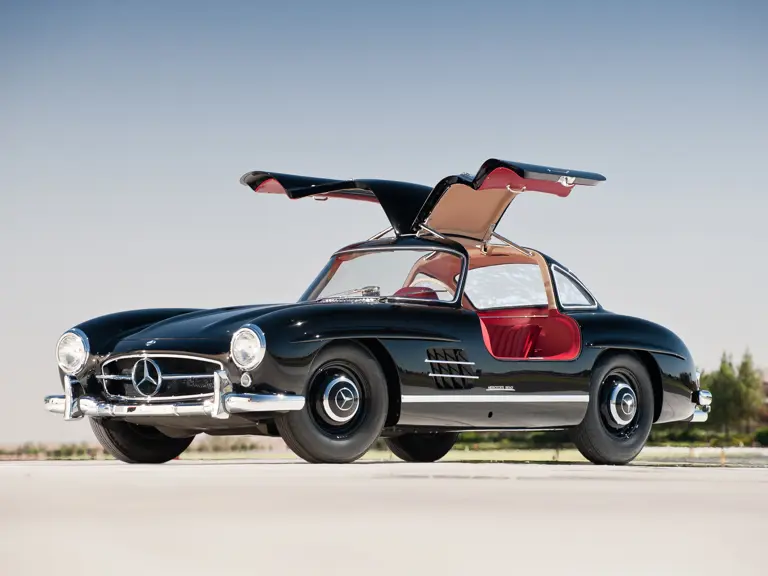
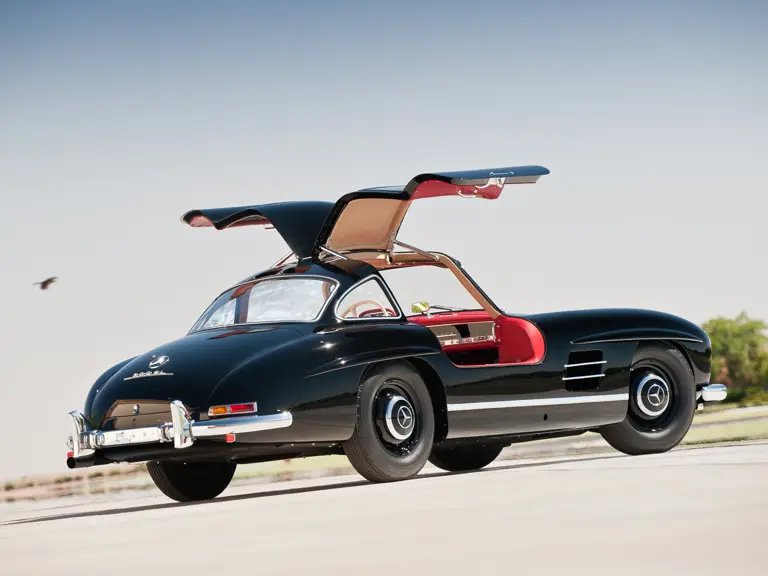
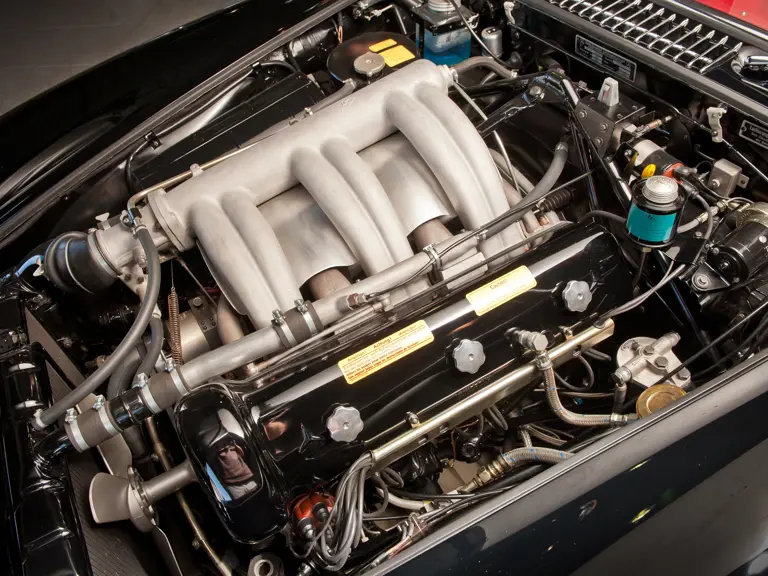


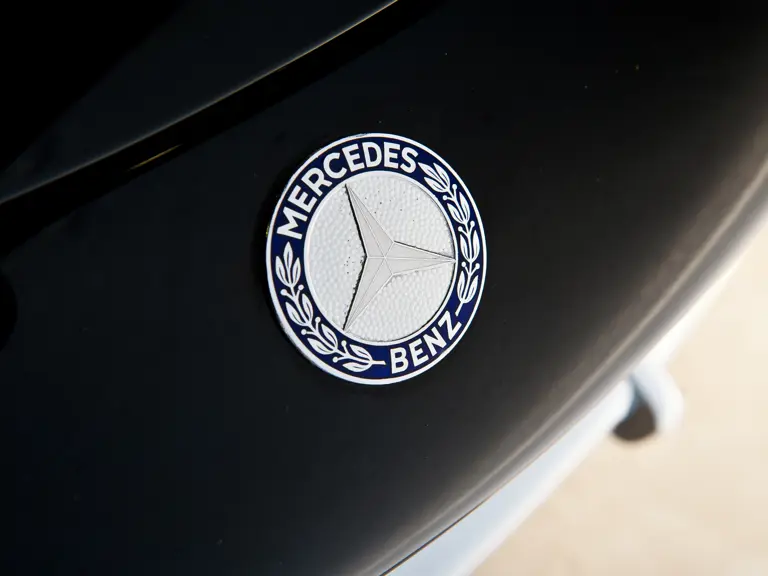
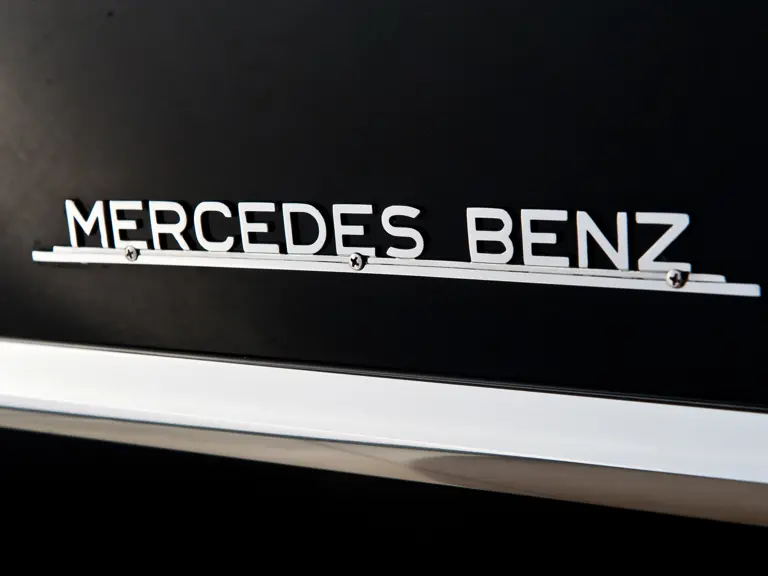
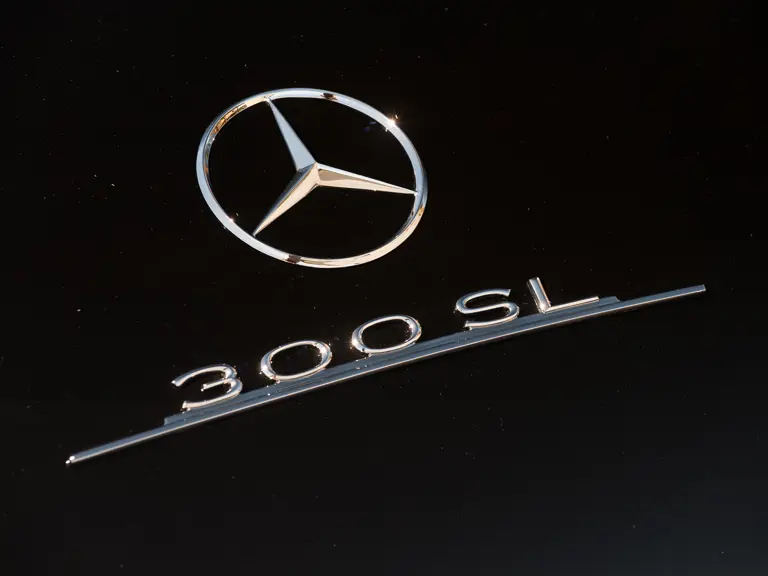
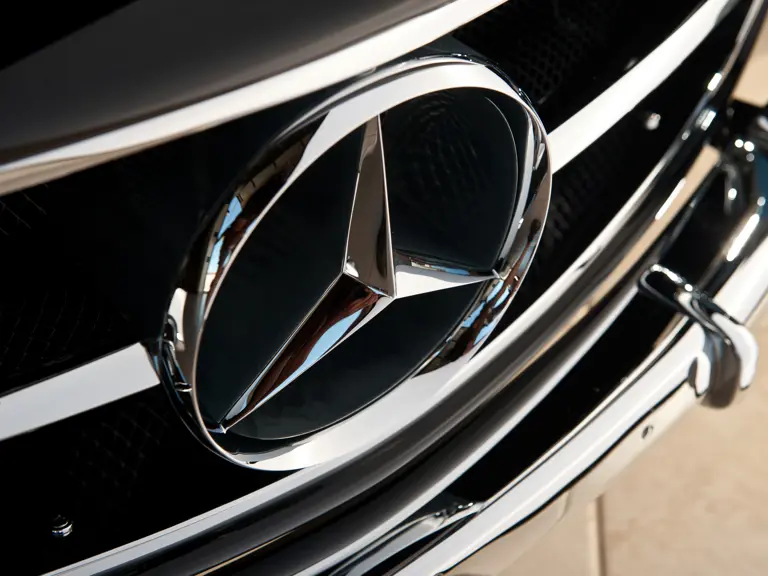
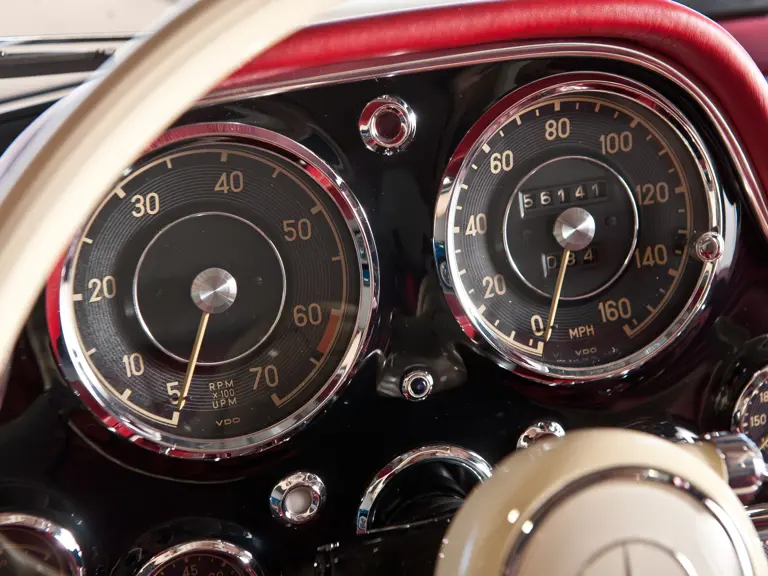
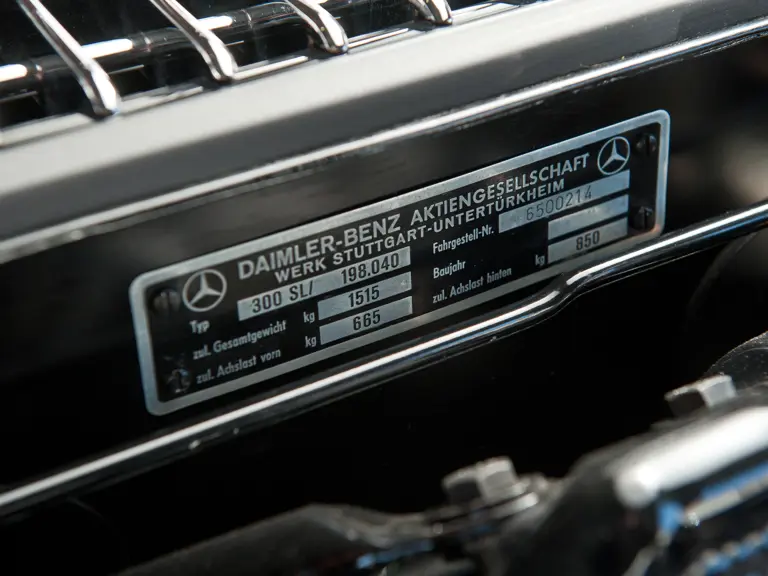
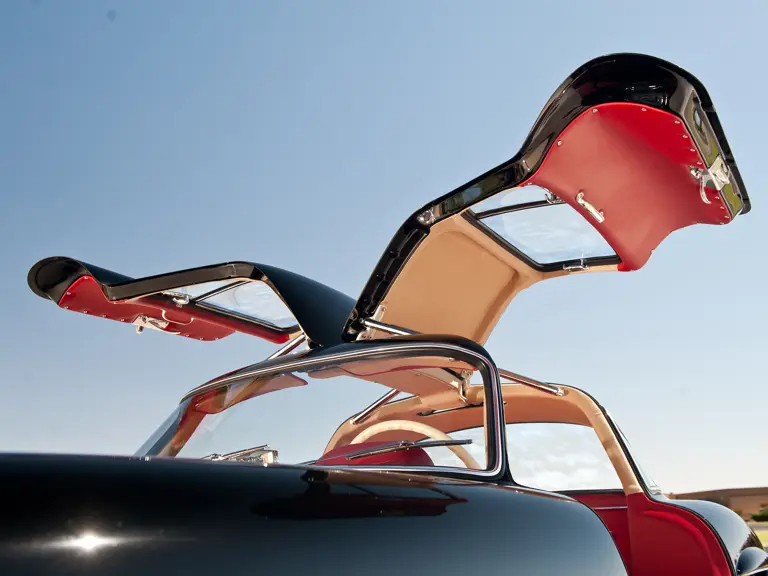
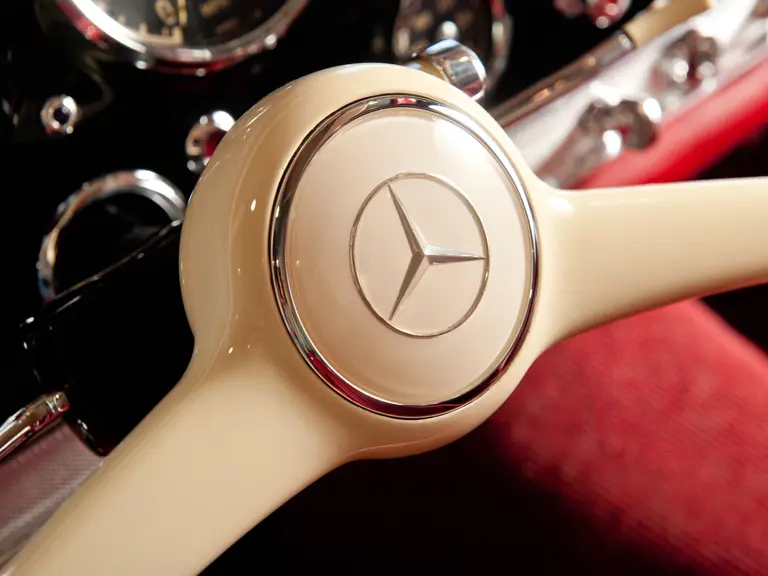
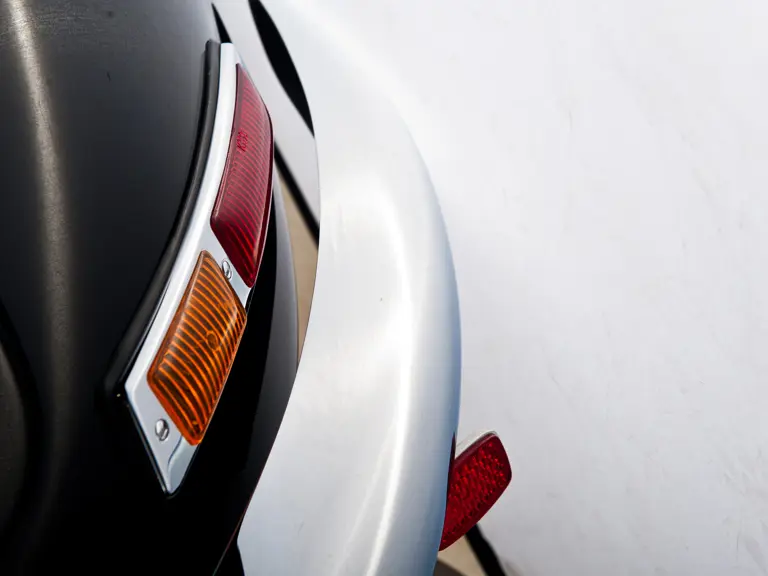
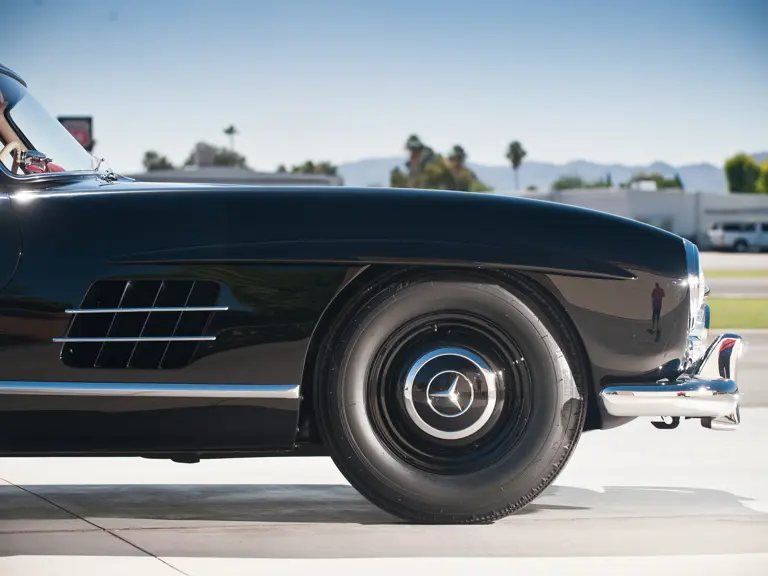

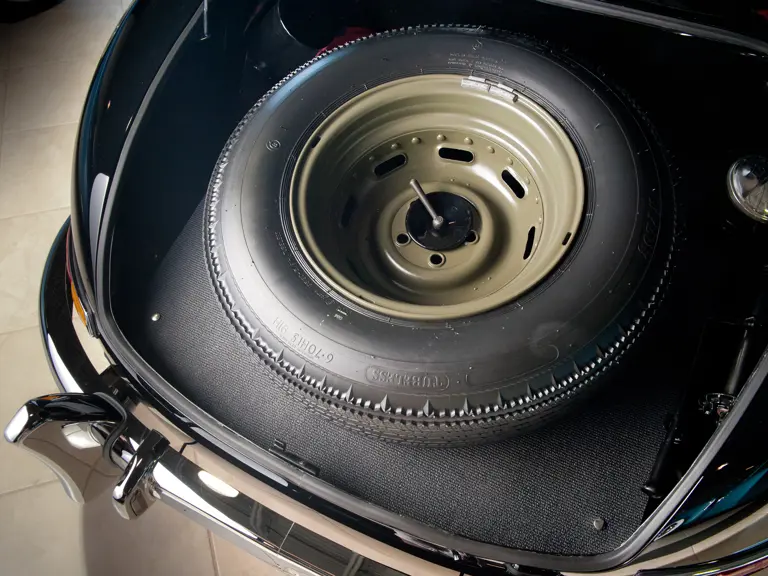
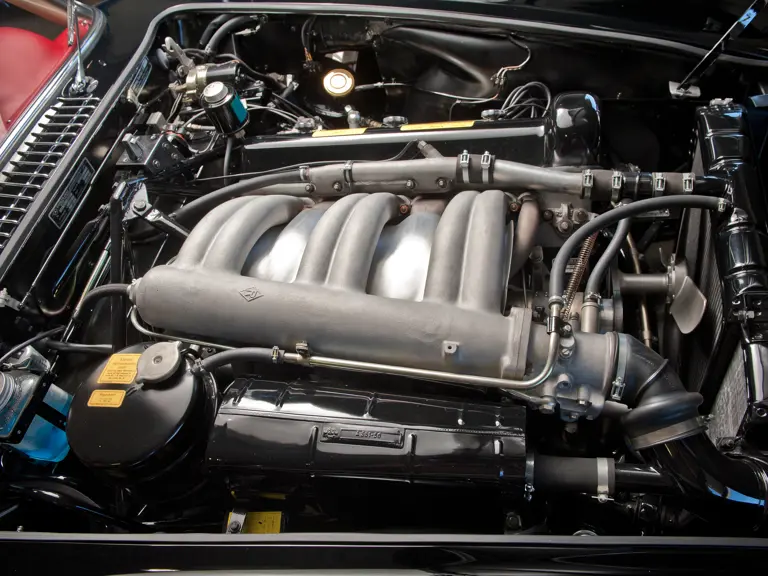
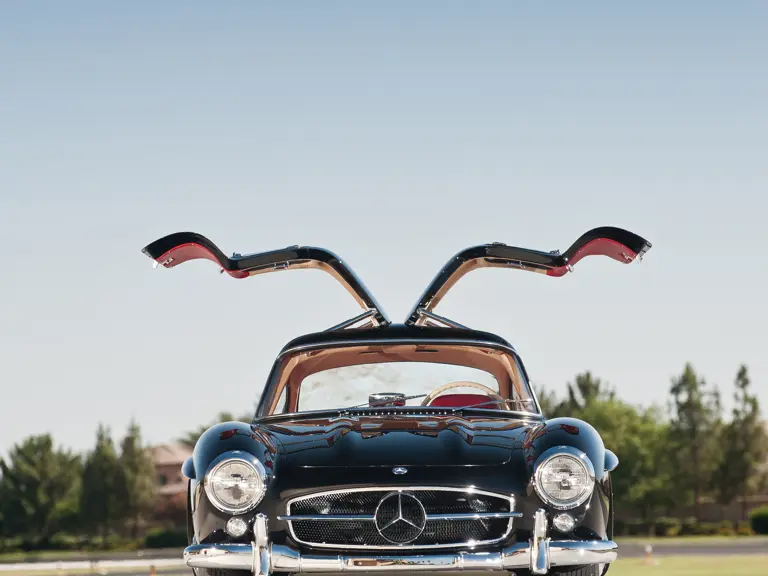
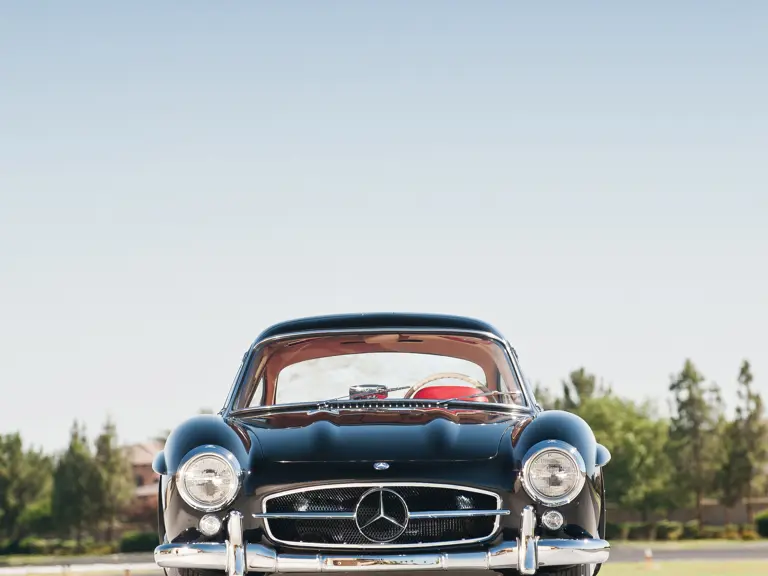
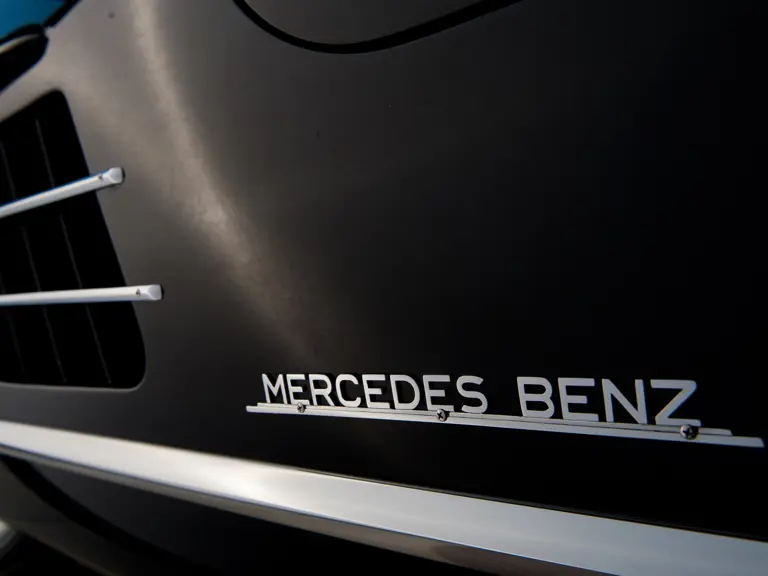
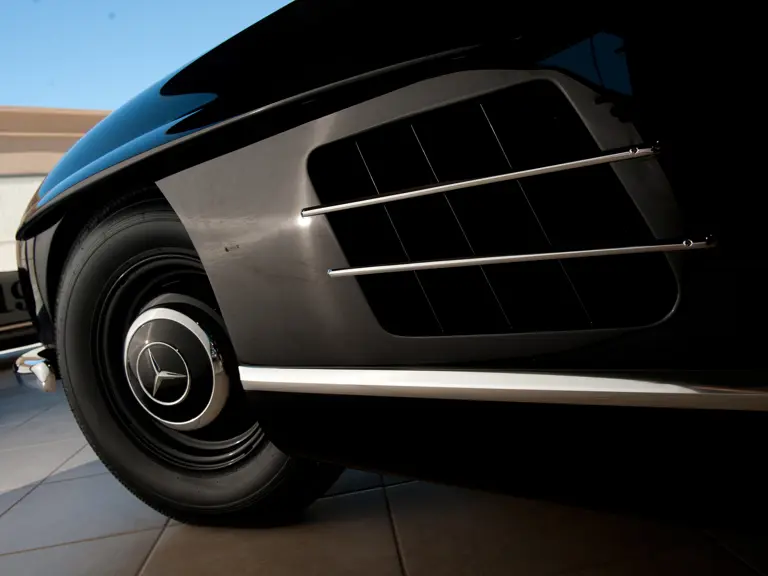

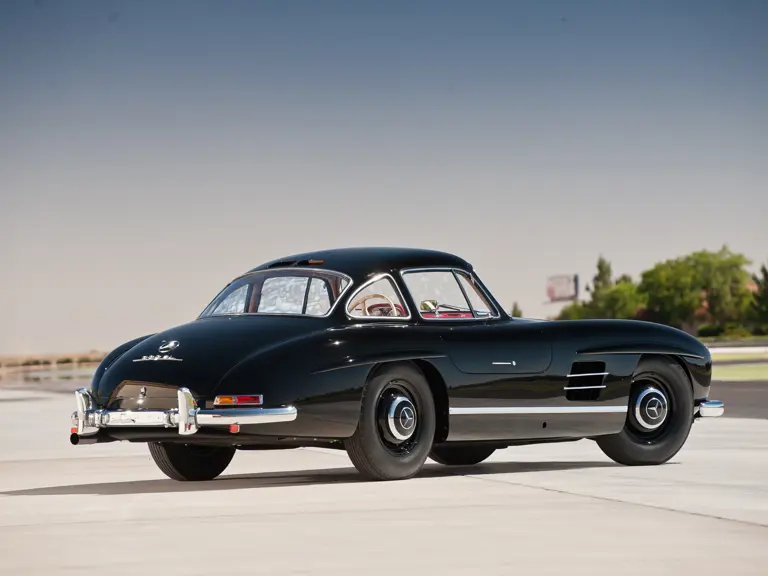

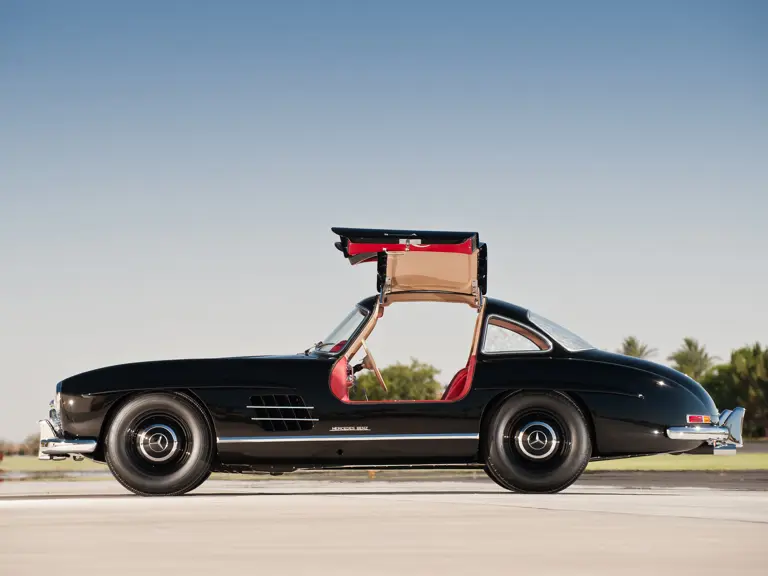

 | Monterey, California
| Monterey, California
